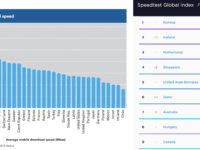The review of Canadian copyright law continues this week with the Standing Committee on Industry, Science and Technology set to hear from Canadian ministers of education and the two leading copyright collectives, Access Copyright and Copibec. The committee review has now heard from dozens of witnesses, including a week-long cross-country tour. With the initial focus on copyright, education, and fair dealing, the MPs are grappling with three key trends since 2012: educational spending on licensing has increased, publisher profit margins has increased with increased sales of Canadian educational texts, and distributions from the Access Copyright licence have declined. This post, the first of four this week on copyright, fair dealing, and education, takes a closer look at the three trends and how they can be reconciled.
Latest Posts
Judge For Yourself: Bell Says It Didn’t Meet CRTC to Review the FairPlay Application, But Here’s the Slide Presentation
The revelation that Bell met privately with the CRTC to present its site blocking proposal months before it became public garnered considerable attention yesterday. The internal documents, obtained and posted by the Forum for Research and Policy in Communications, indicate that the groundwork for the site blocking proposal was laid in the summer of 2017, well before public filings or press reports. As far back as July 2017, Bell executives pressed CRTC commissioner Christopher MacDonald for a meeting with all CRTC commissioners and senior staff to make its case for a commission-backed site blocking system.
The CRTC and Bell were asked about the report yesterday by Mobile Syrup. The CRTC responded that there “is nothing procedurally unusual in this case”, noting that stakeholders can raise any issues that are not formally before the commission. In other words, the commission takes the view that companies are free to lobby without limit until the moment of filing, thereby laying the groundwork for a proposal with commissioners and commission staff without having to respond to public commentary. In this case, the presentation led to the drafting an internal legal memo on the issue well before the public filing.
Fair Play for FairPlay?: Bell Presented Its Site Blocking Plan to the CRTC Months Before It Became Public
The Bell website blocking coalition responded to thousands of interventions on its proposal this week, reiterating many of the same claims it has been making since it launched the request with the CRTC. While the commission should provide details on what comes next shortly, according to internal commission documents released […]
Not So Fast: Digging into MEI’s Report on the State of Canadian Wireless Services
The release this week of the Montreal Economic Institute’s telecommunications report has the feel of a last gasp for a dying argument about the state of Canadian wireless. Gone are the days of telecom companies and their supporters denying that Canadian wireless prices are high relative to other countries. In its place are arguments seeking to justify high prices on the basis of claims that Canada has better networks and challenging geography. What is striking about the latest report is how these arguments fail upon closer inspection with the MEI resorting to creating incomplete data charts on network quality and failing to grapple with countries that have better networks, better pricing, and less wireless density.
House of Commons Ethics Committee Recommends Rejecting Bell Coalition Website Blocking Plan
The Standing Committee on Access to Information, Privacy and Ethics has released its net neutrality report, strongly endorsing net neutrality safeguards and calling on the government to reject the Bell coalition’s website blocking plan should the CRTC approve it. I was the first witness to appear before the committee on the study, where I emphasized the need for stronger net neutrality enforcement, the risks associated with changing U.S. policy, and the concerns associated the Bell website blocking proposal (which at the time had only been leaked). The committee picked up on all those issues, recommending enshrining net neutrality in the Telecommunications Act, calling on the government to seek assurances from the U.S. that its policies will not undermine Canadian traffic, and encouraging the CRTC to more proactively ensure that ISPs are compliant with Canadian law.
The committee report also waded into the site blocking issue, calling on the government to reject it should it be approved by the CRTC.




![By Davepark [CC BY-SA 3.0 (https://creativecommons.org/licenses/by-sa/3.0)], from Wikimedia Commons, https://commons.wikimedia.org/wiki/File:Fairplay_sign.jpg](https://www.michaelgeist.ca/wp-content/uploads/2018/05/1024px-Fairplay_sign-200x150.jpg)






